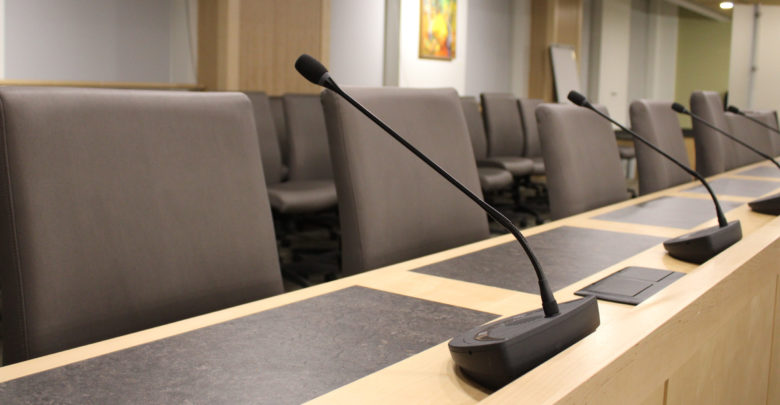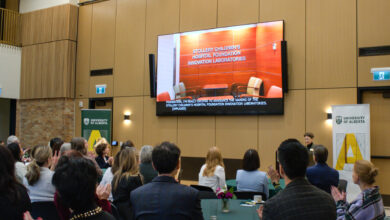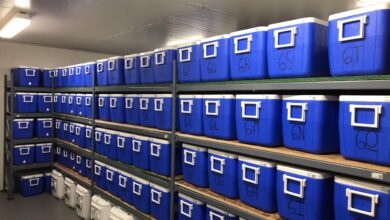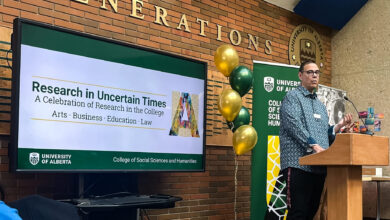U of A proposing 10 per cent tuition increase for international students in 2026
If passed, international students admitted in fall 2026 will pay 33 or 34.9 per cent more than those who were admitted in 2020, according to data compiled by two PhD students.
 Amanda Sparks
Amanda SparksAt the November 18 University of Alberta Graduate Students’ Association (GSA) council meeting, Melissa Padfield, deputy provost (students and enrolment), presented on tuition increase proposals. For 2026-27, the university is proposing a 10 per cent tuition increase across all programs for undergraduate international students in fall 2026.
For graduate international students in course-based master’s programs, beginning fall 2026, the proposed tuition increase is also 10 per cent. The increases for professional programs and thesis-based programs are still under discussion because the university has undertaken a working group, Padfield said.
“We are looking at different approaches to international thesis-based tuition, recognizing that there’s a guaranteed minimum-funding model, and the differential. Recognizing that you pay us, and we pay in some of these situations, and so it becomes an odd flow-through mechanism that we want to make sure is as equitable as possible.”
International tuition offset would be set at 8.55 per cent, which means 8.55 per cent of total tuition revenue would go towards need and merit-based financial supports.
PhD students in the department of sociology, Andrea Dekeseredy and Ping Lam Ip, compiled data on tuition increases at the U of A since 2020, including the proposals for 2026-27. If passed, all international students admitted in fall 2026 will pay 33 or 34.9 per cent more than those who were admitted in 2020, depending on their program.
“We certainly have a desire to maintain program quality,” Padfield says
Padfield cited increases to costs covered by tuition, such as instructor salaries and maintenance, and the university’s gaps in revenue. The U of A has seen a decrease of $222 million in the Government of Alberta’s operating grant over the past three years.
The operating grant “does not have any inflationary increases that have been applied to it over the last few years,” Padfield said. She also mentioned the government’s 2025–26 two per cent domestic tuition cap as a contributing factor to the university’s revenue gaps.
“We certainly have a desire to maintain program quality,” Padfield said. “We also have a very huge infrastructure portfolio at the university that we’re trying to maintain, and a considerable amount of deferred maintenance.”
Tuition proposals are still undergoing consultation
One councillor asked Padfield if the university has data on currently enrolled students “experiencing homelessness, food insecurity, or seeking mental health services because of the increasing financial burden right now.” Additionally they asked if those numbers might change because of the proposed tuition increases.
Padfield replied that the university tracks utilization rates of counseling, clinical services, and applications for financial aid. As well, the Campus Food Bank (CFB) shares its “rates of access and the demographics around that access.”
“Not always can we draw a conclusion that the financial pressures are as a consequence of tuition,” Padfield said. “We are seeing a moderate increase in utilization around bursaries. We also have a partnership with CFB to help inform students who are using the food bank of our bursary services.”
The tuition increase proposals are still undergoing consultation, and will be discussed at upcoming town halls and committee meetings. The International Students’ Association (ISA) is hosting a tuition town hall in Council Chambers on November 22, at 5:00 p.m.. The GSA is hosting a second town hall on November 26 from 12:00 p.m. to 1:00 p.m..




